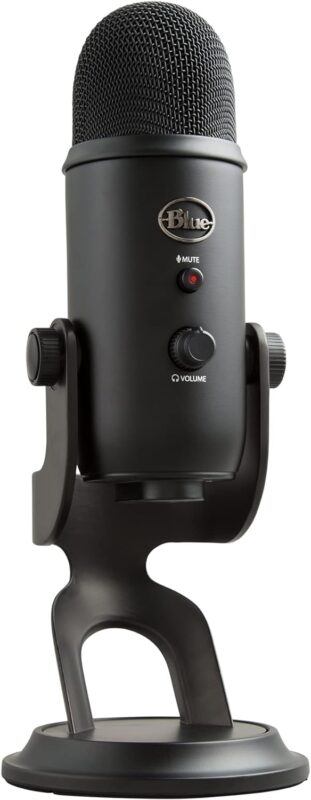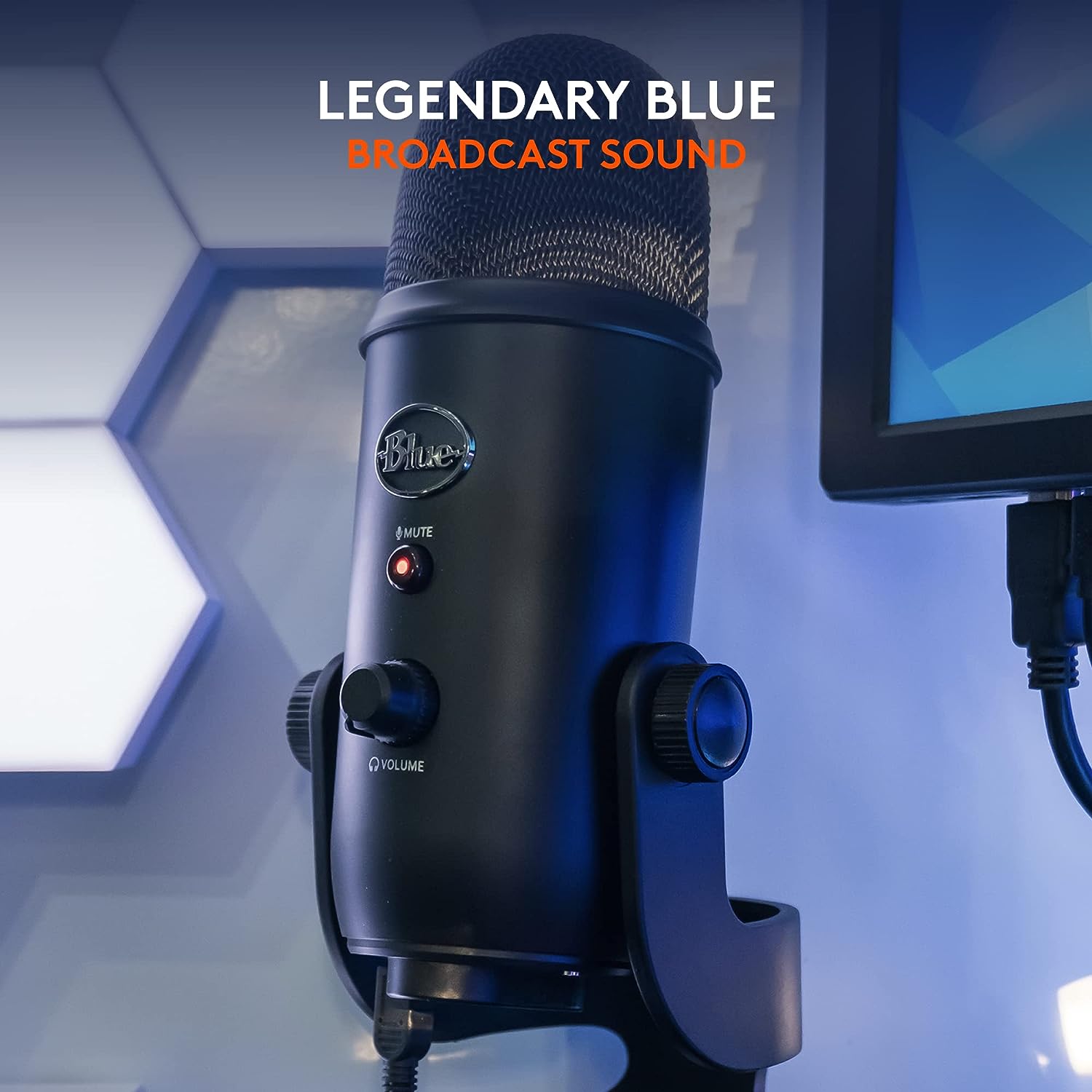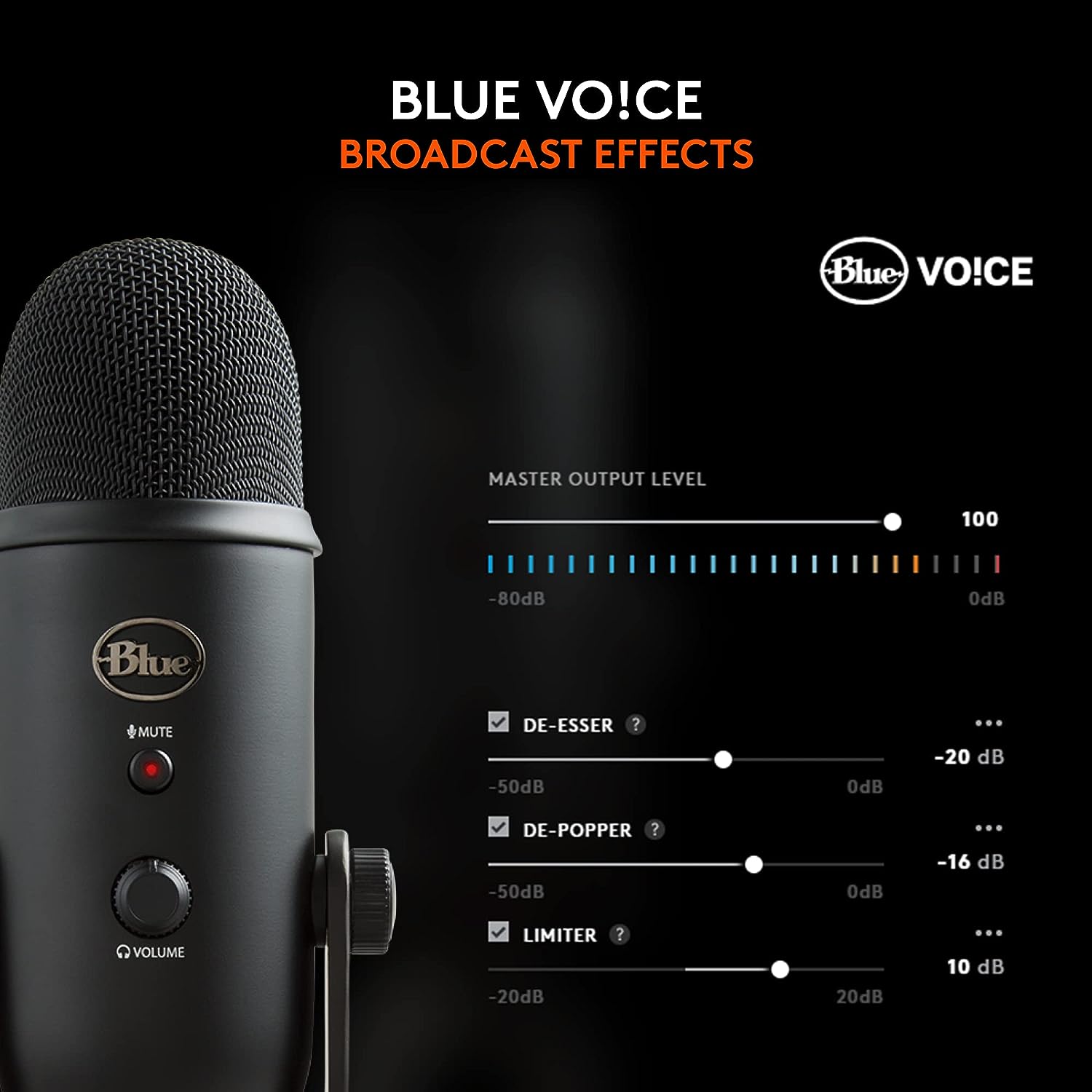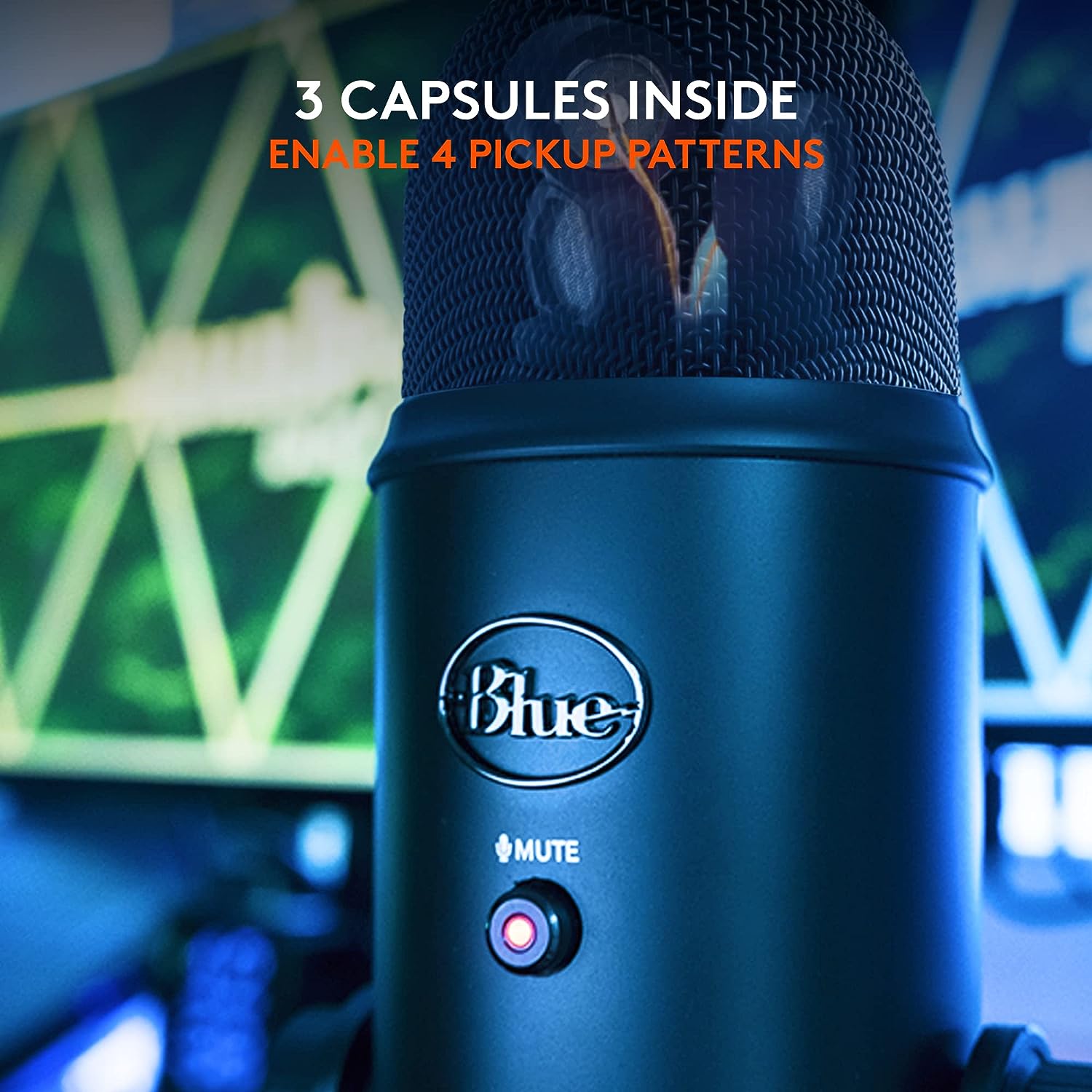Are you in the market for a new microphone? Look no further than the Blue Yeti! In this review, we’ll dive deep into the features, advantages, and disadvantages of this popular microphone.
Advantages of the Blue Yeti
- Exceptional Sound Quality: The Blue Yeti delivers crystal-clear audio, making it ideal for podcasting, streaming, and voiceovers.
- Versatility: With four recording patterns (cardioid, bidirectional, omnidirectional, and stereo), it adapts to various recording scenarios.
- Plug-and-Play: Setting up the Blue Yeti is a breeze – just plug it in and start recording. No need for complex software installations.
- Built-in Gain Control: Adjust your microphone’s sensitivity on the fly with the handy gain control knob.
- Sturdy Build: This microphone is built to last, with a robust metal construction that can withstand daily use.
- Zero Latency Monitoring: Enjoy real-time audio monitoring without any annoying delays.
- Headphone Jack: The Blue Yeti features a headphone jack for direct audio monitoring.
Disadvantages of the Blue Yeti
- Bulky Size: Some users may find the microphone’s size a bit cumbersome, especially for travel.
- Sensitivity to Background Noise: The Blue Yeti can pick up background noise, so a quiet recording environment is essential.
- Price Point: While it’s not the most expensive microphone on the market, it’s not the cheapest either.
- USB Cable Length: The included USB cable is relatively short, so you might need an extension for more flexibility.





Reviews
There are no reviews yet.